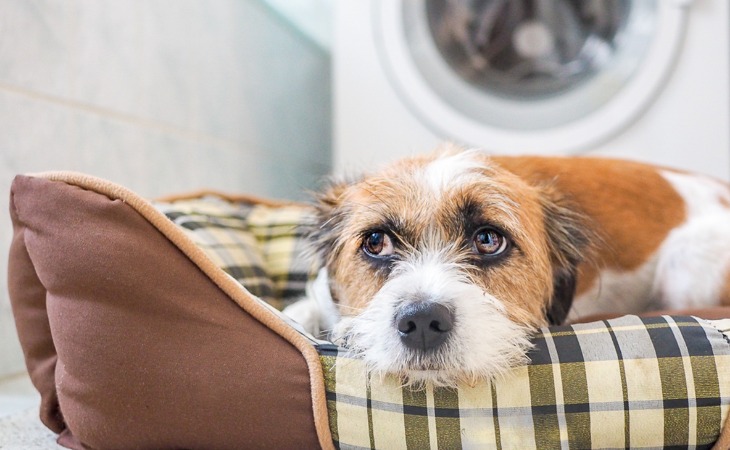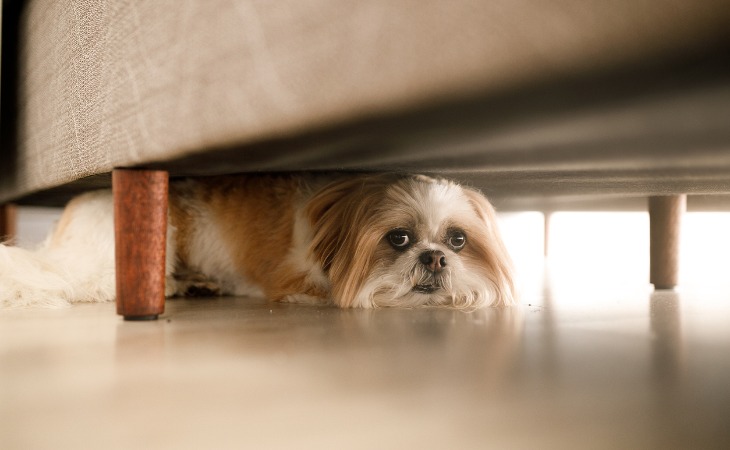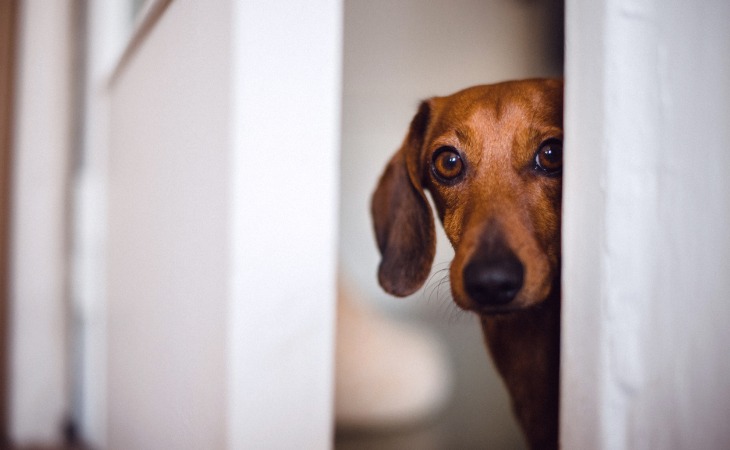As we know, dogs have highly developed senses, especially hearing and smell. While these allow them to get out of many situations, they also cause them a great deal of fear. Some of these fears are due to bad experiences, others are due to genetics or a lack of awareness. In any case, here is an overview of the most common dog fears.
Just as humans experience a rich range of emotions that include fear and anxiety, our loyal companions also have phobias. A phobia is a pathological and disproportionate fear response to an object or situation. For dogs, this pathological state can manifest itself at any age. It is sometimes disabling because it prevents them from going out or even eating. It can also cause them to isolate themselves. If this phobia is chronic or present over too long a period of time, it may be accompanied by other symptoms in your pet. These include vomiting, diarrhea, self-inflicted injuries, weight loss, and more.
One of the most common dog fears: thunderstorms
The fear of thunderstorms is the most common fear amongst dogs. There are various reasons why thunderstorms are a source of anxiety for man’s best friend. The most common one is probably related to the sound of thunder. Because of their highly developed senses, dogs show anxious behavior even before the thunder starts. It is normal for them to be scared to death of thunder. This is because their hearing amplifies the perceived sound significantly. A thunderclap seems incredibly louder, more powerful, and closer to them than it is to us.
Thunder, lightning, rain on the roof, drops in air pressure before the storm – these are all factors that cause anxiety in dogs. They express their fear by whining, hiding, kicking, barking, running around, salivating, or even urinating on the spot.

The fear of fireworks
Due to their hypersensitivity to noise, the vast majority of dogs have a phobia of fireworks. The reason for this is that they cannot understand where the noise is coming from and what it means. Even after growing up in an urban environment, dogs still have primitive instincts. For them, a loud noise is synonymous with danger. As soon as they hear it, they want to run away to protect themselves.
Moreover, they do not have the ability to associate the sounds of fireworks with a duration. We, humans, know that firecrackers or fireworks will stop at such and such an hour, but this is not the case with dogs. For them, the noises seem incessant and unbearable. Beyond the noise, the smell of smoke in the air and the visual effects that take place during the show are also sources of fear for dogs.
The fear of being alone
Loneliness is one of the most common dog fears. Their fear of being alone is often associated with the death of their former owner or the fact that they have been abandoned in the past. Another cause of loneliness or separation anxiety in dogs is a change in their owner’s schedule. For example, if your dog is used to being with you all the time and your new schedule requires you to be away from home without him or her, he or she may suffer anxiety because he or she is not used to you being away.
It is important to note that in the majority of cases, this type of phobia has its origin in the animal’s genetics. Only a handful of breeds are predisposed to it. Among them are the Shetland Sheepdog, the Border Collie, and the German Shepherd.
The fear of going to the vet
Like us, dogs have a good memory. They often remember things associated with certain experiences, such as visits to the vet. Dogs associate these visits with negative moments because, in the vet office, they are confronted with unusual smells, sensations, and noises. In addition to all this, dogs may also experience the discomfort of other dogs through their sense of smell. Thus, when he/she returns, the same sensations are repeated and consequently put him/her in a state of stress.
The fear of unknown objects
Whether it’s a tree, a statue, a toy, a cushion, a vacuum cleaner, a skateboard, or an umbrella —our companions can behave in a very anxious way when they are in front of objects they are not used to see. The reason is that they perceive them as a threatening signal. Consequently, they either try to get as far away from the danger as possible by hiding, they start barking, or they put their tail between their legs.
The fear of the dark
Dogs can be afraid of the dark because at night, objects around them become unfamiliar and the movements and noise can frighten them. Just like us, they see less if the light is too dim. This fear of the dark can also be associated with bad experiences in the past or with health problems.

The fear of other dogs
Other dogs can, in fact, cause phobia in our companions. This fear often occurs in puppies that have been taken away from their mother too early and have unfortunately not had the opportunity to become familiar with other dogs. The same is true for those who have lived through a painful and traumatic experience caused by another dog. As already mentioned above, dogs can perfectly remember their past experiences. Therefore, it only takes one bad interaction to make them fear other dogs.
Another common dog fear: getting into a car or vehicle
When a dog does not want to get into a car at all, it is often because he has suffered a car-related trauma (for example, when he has been hit by a vehicle in the past), or simply cannot stand the noise of the engine.
The fear of getting into a car can also be explained by the fact that the dog has never been in a car and that this experience is unfamiliar to him or her. It can also be due to the feeling of motion sickness or because he or she thinks that the vehicle is always synonymous with visits to the veterinarian. On the other hand, a dog can feel disturbed by the lack of control over his or her environment and movement. The vehicle is in motion, the landscape is changing and he or she does not have the means to act and check everything.
The fear of stairs
There are several reasons for the fear of stairs, a very common fear amongst dogs. Among these is the lack of exposure to stairs from a young age. In this case, the staircase is considered by the animal as something unknown and therefore a potential threat. This phobia can also be linked to a traumatic experience. Perhaps the dog has already fallen down, got his paw stuck in the wood of the floor, or has been locked in a stairwell.
How do I recognize when my dog is scared?
Body language is very important when trying to understand if your dog is afraid.
We can detect if a dog is scared by looking at the ears. Dogs will lower the ears backward and possibly curl them upon themselves. Sometimes a dog, after too much stress, will pee or squeal. There are many signs that can indicate fear in a dog, so be careful to properly understand your dog’s behavior and isolate him or her if one of these situations should occur.

